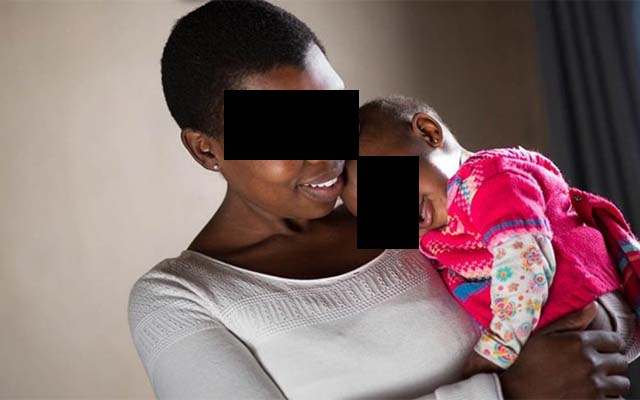Babies’ HIV tests in the balance


Zimbabwe has made giant strides in reducing the number of babies born infected with HIV/AIDS ever since Option B+ was rolled out in June 2013, but funding bottlenecks could reverse those gains
Sifelani Tsiko : Zimpapers Syndication Writer
POOR funding for the Prevention of Mother to Child Transmission initiative (PMTCT) is threatening to derail efforts to attain the newly set Sustainable Development Goals which, among other things, aim to eliminate new HIV infections among children, a senior health official says. Dr Angela Mushavi, National PMTCT and Pediatric HIV Care and Treatment Coordinator in the Ministry of Health and Child Care, told Zimpapers
Syndication, that dwindling financial support has weakened the programme which was a crowning success under the previous 2015 Millennium Development Goals.
“At the moment, we are not doing very well in terms of testing babies for HIV,” she says. “Funding has declined sharply and we are now at risk of going back in terms of our key health milestones and achievements made in the past.”
Due to poor funding for the PMTCT programme, Dr Mushavi says it will be impossible for Zimbabwe to attain its SDGs which aim to “end poverty in all its forms everywhere”, including broad issues such as hunger, health and marine conservation by 2030.
Dwindling resources have dealt a severe blow to the PMTCT programme.
Before 2010, the pediatrician says, funding support to the health ministry and the National Aids Council came from the Global Fund as well as from PEPFAR and other UN multilateral agencies.
The Global Plan to eliminate mother to child transmission of HIV was launched in 2011 at a UN High-Level Meeting in New York to cover the period of 2011-2015.
“Starting in 2010 when the idea of the plan was mooted by UNAIDS, donors already worked behind the scenes to rally behind the plan, and after its official launch funds were availed to support the scale-up of implementation towards Elimination of Mother to Child Transmission of HIV (EMTCT),” says Dr Mushavi.
Following on from the launch in 2011, she says, the Children’s Investment Fund Foundation (CIFF) injected a large five-year fund of $45 million through the Elizabeth Glaser Pediatric AIDS Foundation (EGPAF Zim) over and above baseline funding from other development partners.
“This funding allowed us to structure support to the needs of the districts including recruiting District Focal Persons for PMTCT who had vehicles assigned to them to allow them to move from one part of the district to the other providing on job training and support for PMTCT and early infant diagnosis of HIV, with linkage to care and treatment for infants who test HIV positive,” the HIV child care expert says.
“The five-year grant was also used for massive training and capacity building activities for all health care workers countrywide and to roll out new 2010 and 2013 WHO guidelines.”
Dr Mushavi says equipment for point of care CD4 testing was also procured including more than 150 devices which helped to make accessible CD4 testing to HIV positive pregnant and breastfeeding women.
Resources for EMTCT increased to $16 million annually in the 2012-2014 period.
“The CIFF grant came to an end in September 2015 hence we had a lower budget in that year,” the HIV child care expert says.
“Since that time, usual sources of funds also dwindled and CIFF resources were reduced to just maintenance levels to the end of 2017.
“Quite clearly the district focal persons and their vehicles could not be supported and, in fact, as of now there is no focal point for PMTCT at district level. There is usual ministry staff who are inundated with other responsibilities in addition to working with an establishment that is below normal levels.”
From 2011 through to September 2015, the PMTCT programme reached nearly two million pregnant women with antenatal care, and enrolled more than 280 000 HIV-positive pregnant women and over 234 000 HIV-exposed infants into the national PMTCT programme.
As a result, PMTCT services in 1 560 ante-natal clinics (ANC) sites had 95 percent coverage.
They have become widely available throughout the country’s clinics in all 62 districts dotted across Zimbabwe.
PMTCT services have also come within the reach of many pregnant mothers who are HIV-positive.
With funding from the pre–September 2015 period, most women had access to Option B+, a lifelong antiretroviral therapy for all HIV-positive pregnant and breastfeeding mothers, which helps in prolonging life and at the same time significantly reducing the risk of mother-to-child transmission of HIV.
Ever since Option B+ was introduced in June 2013, Zimbabwe has made huge strides in reducing the number of babies born infected with HIV/AIDS.
This firmly put Zimbabwe on track towards scoring successes in combating HIV/AIDS as Cuba had done after being validated by the World Health Organisation (WHO) in the elimination of mother-to-child HIV transmission.
According to the WHO, the term “validation” is used when a country has successfully met the criteria for eliminating mother-to-child HIV transmission and this is set at below 5 percent of MTCT.
“Zimbabwe has an MTCT rate of 7 percent and we need to get to less than 5 percent to enable us to attain our SDGs by 2030,” Dr Mushavi says. “We only need to reduce it by 2 percent or to even eliminate it.”
Early this month, the United Nations Development Programme (UNDP) and the Global Fund provided additional funding of $143 million to help scale up the fight against HIV in Zimbabwe.
This additional funding to the Global Fund’s existing HIV grant to Zimbabwe brought the total amount to date to $611 million.
Implemented by UNDP, in partnership with the Ministry of Health and Child Care, the National AIDS Council and civil society organisations, the new funding will run for one year, from January to December 2017.
The existing HIV grant supports 880 000 people in Zimbabwe to access life-saving HIV treatment.
However, Dr Mushavi says this new funding facility will not help much.
“The Global Fund application in 2013 was done during the time the PMTCT was receiving resources from CIFF and consequently the current grant under Global Fund is supporting few activities targeted at PMTCT,” she says.
“This has severely hamstrung capacity to scale up PMTCT programmes and a resource mobilisation strategy is urgently needed so the country can continue on its trajectory of declining mother-to-child transmission rates.”
She says PMTCT funding at present, excludes the cost of drugs and is barely reaching above the two million targeted population.
“Most funding partners are just lumping funding for PMTCT under the budget for care and treatment,” she says. “There is no separate budget line for PMTCT.”
HIV remains a major public health challenge in the country with an estimated 1,4 million people living with HIV.
Even though Zimbabwe has seen one of the sharpest declines in HIV prevalence in the region, at 16,1 percent, it remains among the highest HIV prevalence rates in the world.
According to official health figures, Zimbabwe has a 93 percent ANC attendance while 75,7 percent of pregnant women make at least four visits to a healthcare centre.
About 84 percent of HIV positive pregnant women receive ARVs for PMTCT and 78 percent of live births are delivered by skilled birth attendants.
The country has a maternal mortality ratio (MMR) of 651 per 100 000 births and up to 26 percent of MMR is attributable to HIV/AIDS. More than 68 000 people need PMTCT.
In addition, health officials say 21 percent of the Under 5 Mortality (<5MR) is attributed to HIV/AIDS.
Zimbabwe records some 50 000 new HIV infections a year and more than 40 000 people die from the deadly pandemic each year.
However, some critics feel strongly that inadequate funding for the PMTCT should not be used as an excuse for failure to eliminate the mother-to-child transmission of HIV.
“Cuba has officially become the first country in the world to eliminate the transmission of HIV and syphilis from mother to child, according to WHO. Its milestone is important on several fronts in the global health governance work towards an Aids free generation,” writes Erica Penfold, a research fellow at the South African Institute of International Affairs in an article in an online publication.
“Despite lack of resources and financial assistance, Cuba provides access to health care for its entire population of more than 11 million . . . its healthcare system is linked to research and development, providing constant innovation in treatment and care.”
Zimbabwe and other SADC, facing inadequate funding, the researcher says, should adopt the Pan American Health Organisation approach to deliver success on reducing child HIV rates.
“If SADC could mimic or adopt the same level of success that the Pan American Health Organisation has, this could significantly decrease MTCT in the region,” the researcher notes.
“The SADC Secretariat should facilitate and coordinate regional issues and health care.” – Zimpapers Syndication.








Comments